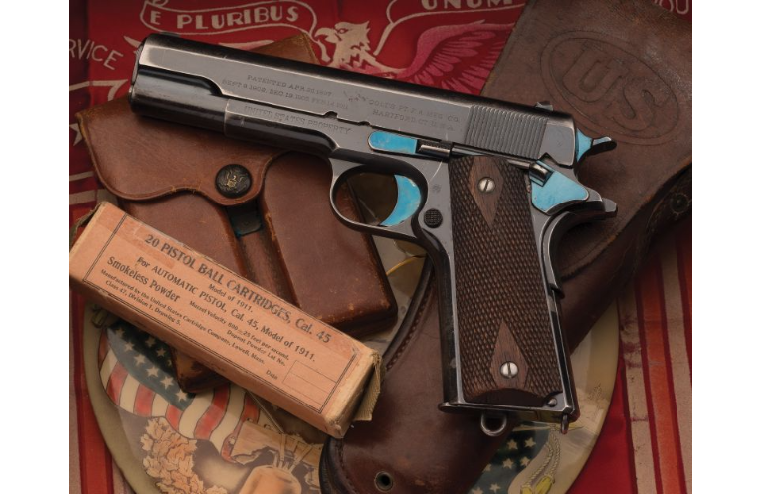
The A2 is one “that could have been,” according to Dan Wesson. Sights: 3 white dot fixed blade (front) drift-adj. Grips: Cocobolo, double-diamond checkered All these features add up to a pistol that represents one intended for a destiny at the range.īottom Line: Springfield Armory’s Mil-Spec is a mid-priced 1911A1 that offers a blend of nostalgia and modern features. The slide has a flared and lowered ejection port. On top are three, white-dot blade sights that are easier to see than the originals. However, Springfield Armory’s 1911 Mil-Spec isn’t quite so “mil-spec.” Inside the slide is a stainless steel, match-grade barrel fitted with a stainless barrel bushing. In part like Colt, Springfield Armory’s name resonates with Model 1911 enthusiasts due to the fact that the former government facility of the same name manufactured a number of original 1911s. Springfield Armory’s tribute wears a correct Parkerized finish on both the frame and the slide.

However, the hammer spur is narrow - more like the post-war version - and the thumb safety lacks the checkered tab seen on war guns. The trigger length is correct (albeit with an incorrect serrated shoe), the triggerguard is correct, as is the grip safety and arched mainspring housing. In many ways, and more than others, Springfield Armory’s 1911 Mil-Spec is an accurate representation of the original M1911A1. These pistols exist as a functional tribute to the airmen, sailors, soldiers and Marines who fought to preserve freedom during the largest conflict the world has ever known. Some are faithful to the original, while others stray. In honor of the 75th anniversary of D-Day, Guns & Ammo offers a look at modern so-described “mil-spec” M1911A1s in. To ease production costs, adapt the design to modern manufacturing and make M1911A1s more enjoyable to shoot, most are a blend of traditional and modern features. The M1911A1 was functional but basic, and in the last 75 years many brands have offered their own twist. Nearly 1.9 million 1911A1 pistols were built during the war. Each of the brands had unique roll stamps that identified the gun’s maker, model, patent numbers, and noted that the pistols were U.S. A number of manufacturers were building them including Colt, Ithaca Gun Company, Remington Rand, Singer and Union Switch & Signal. From 1942 to 19A1 pistols should show a slight to very noticed mismatch of coloring on the muzzle end of slide, and from 1943 the slide lock notch area should also show some discoloration from hardening after the pistol's finish was applied. It is unknown for sure if any slides were made and no frames were made. Some parts were made but no complete pistols. Was issued a contract on Jand canceled on Dec. From 1942 to 19A1 pistols should show a slight to very noticed mismatch of coloring on the muzzle end of slide, and from 1943 the slide lock notch area should also show some discoloration from hardening after the pistol’s finish was applied.

Begining in 1940, the slide’s muzzel end was hardened after the finish was applied but a color mis-match was suppose to be rejected.


 0 kommentar(er)
0 kommentar(er)
